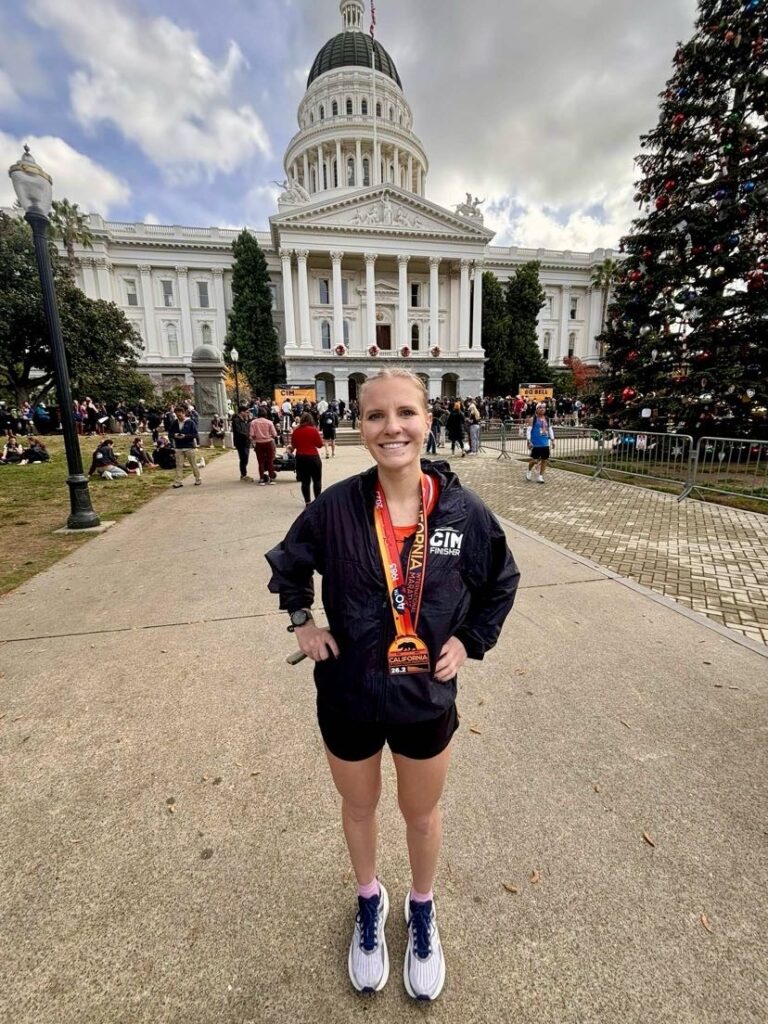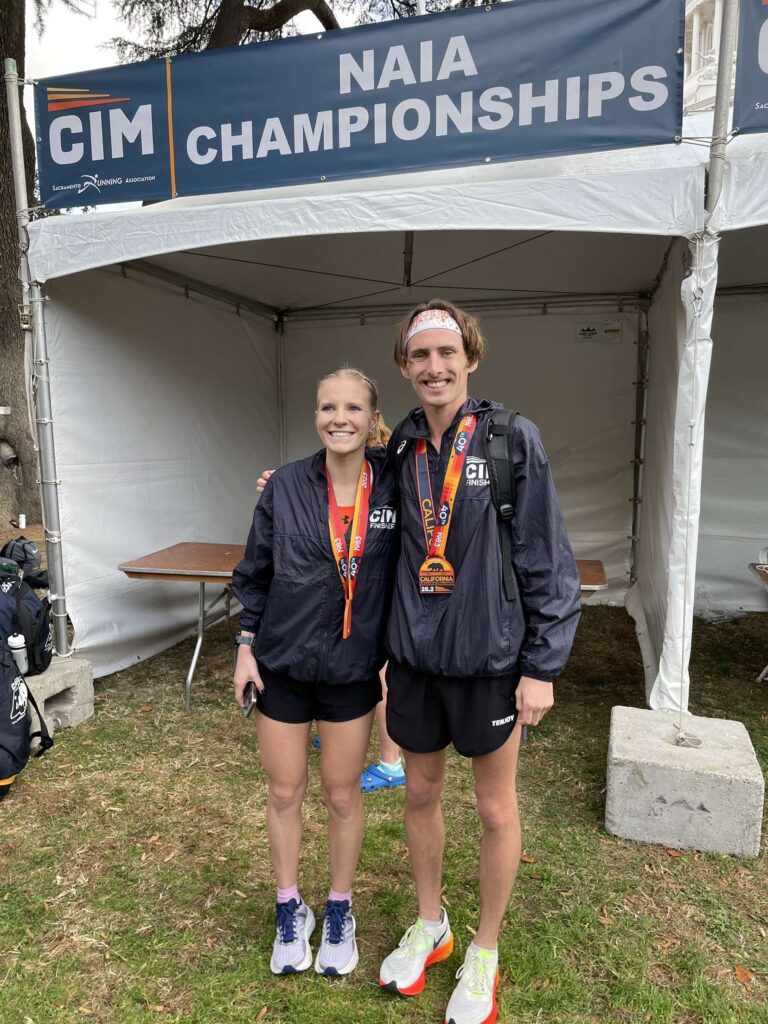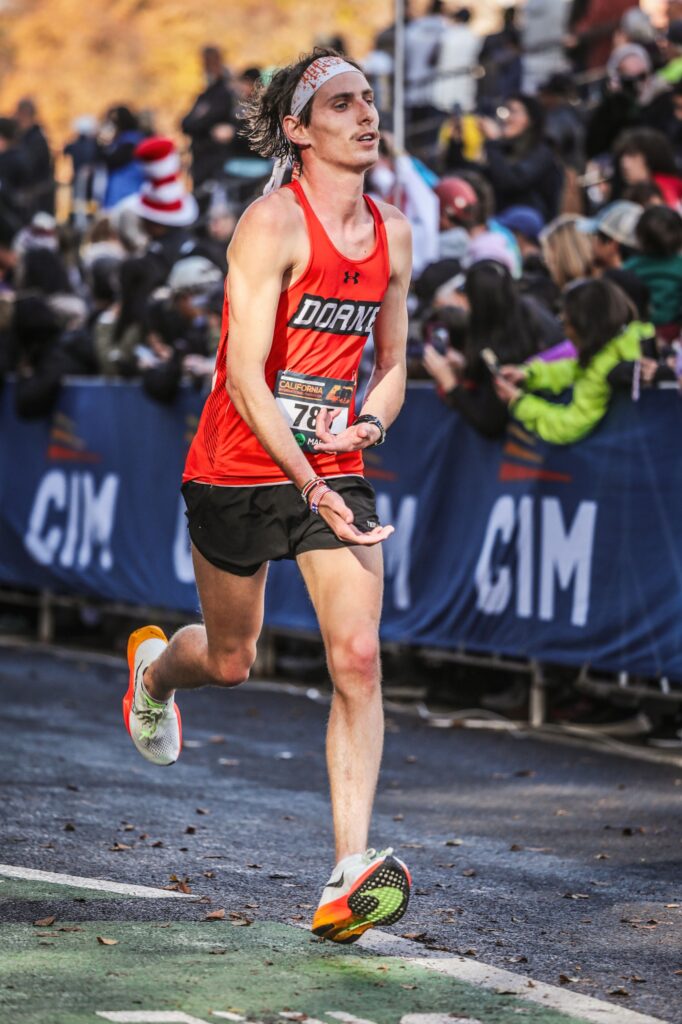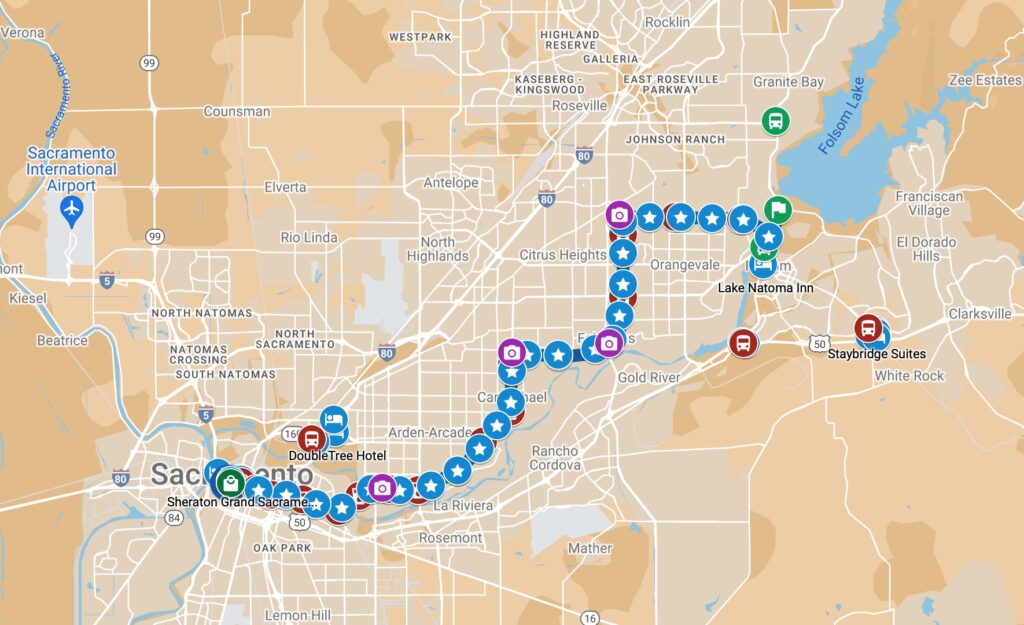Jakob Tadlock

Running a marathon is not something that most people want to do. Just the thought of running 2.62 miles makes people tired let alone 26.2 miles. I had never run a marathon before and have thought about doing one but not taken it seriously. This past December I asked my coach, Dustin Llewellyn at Doane University, if I could run the marathon out in Sacramento, California, for the inaugural NAIA national marathon at the California International Marathon (CIM). His first response to me came with a smile and as he said, “Why do you want to run a marathon?” I told him that I’ve wanted to for a while and this would be a good opportunity to run one. Running the Boston Marathon was something I’ve wanted to do but wasn’t sure if I ever would. The qualifying time for my age group, 18-35, is sub three hours.
Jaden Hilkemann also ran the NAIA marathon in Sacramento and I asked her a few questions about her experience both in the marathon and leading up to it.
Q: How did you prepare mentally for the marathon?
A: Anyone who is a runner knows that running is 80 percent or more of a mental game. As I continued my running career at Doane, I relied heavily on positive self-talk and positive affirmations before and during races. This included reminding myself of the hard work I’ve put in, reflecting on successful past workouts and races, as well as talking positively to myself. While I have found this strategy very helpful, the marathon race was an entirely different ballgame. It is strange to say but because I had been preparing for this race for over five years, I was so excited for this opportunity that those positive thoughts came very naturally and I did not have to intentionally force myself to practice positive self-talk. I was so happy to get to that start line that I didn’t have hardly any negative thoughts cross my mind before the race. This is not typically how races go for me but it was a great feeling!
Q: How did you prepare diet- and hydration-wise?
A: A lot of practice and training was dedicated to hydration and diet because fueling for a race was new to me. During all of my long runs leading up to the marathon I practiced drinking liquids and sports drinks on the move (harder than it looks). I also tried a few different types of gels and GUs to see which ones worked best for my stomach. These were also hard to get used to. I’ve learned from my coach and from other teammates and friends who have run marathons before that one of the biggest mistakes that marathoners make is under-fueling and under-hydrating. I was determined to not let this be an issue for myself. I was very intentional throughout the race about getting as much water and calories in as I could to prevent myself from “bonking.” I specifically remember telling you [Jakob] on the bus ride to the start about how important this is and to not forget about your fuel. Lastly, I did my very best to get EXTRA calories throughout my entire training block in the fall to make sure I was replenishing all of the calories lost during those long runs and workouts. Underfueling yourself can lead to lots of issues but more specifically can lead to injuries if you are not careful.
Q: What problems did you run into during the marathon?

A: Although I was very excited and thankful to be running this marathon, it did not turn out how I hoped. I ran almost 25 minutes slower than I was anticipating. I was dealing with some minor foot problems leading up to the race which changed my running form a bit. I believe this was one of the contributors to both of my calves cramping up at mile 15. While I had a great 17 miles, the last 9 were extremely tough, especially the last 5 miles when my body really started to break down. Another contributor that is important to mention is that I raced the day before my period. This is something that does not get talked about enough in women’s athletics. Right before a woman’s period, hormone changes create low energy, fatigue, dehydration, increased muscle aches and even changes in how women metabolize calories. It is important that we talk about these things because it highlights the biological differences of men and women and how different sexes cannot necessarily prepare for big athletic events in the same way. The more we talk about this the more we can help elevate female athletes and encourage more research and training on female athletes and their menstrual cycles.
Q: What helped you in finishing the race?
A: My family, coaches, and teammates played a huge role in my ability to finish. As I mentioned before, the last few miles were rough, it felt much more like a crawl than a run, but the fact that my family had come to California to support me and all of my coaches were so supportive and encouraging truly helped me cross that finish line. My coach, Dustin Llwellyn, spent years helping me prepare for this race with specialized training and workouts to prepare for the marathon. I am so thankful for him and give him a lot of credit for my success as a Doane athlete. Every time I passed my family on the race course I felt a jolt of energy. I was so happy that they were able to be there and support me throughout this race. All of my teammates were so supportive throughout my training cycle. They were tracking my race all the way from Nebraska, and I definitely felt the love. When things got really tough in the last 2 miles, my best friend and now coach, Annika Pingle, hopped in the race to help me finish. She ran over a mile by my side. I don’t know if I would have been able to finish without her. The last mile was very emotional for me. There were times when I felt like I was going to have to drop out. Annika stayed with me until the finish line was in sight, reminding me that I could do it!
[End of interview]



To qualify for the NAIA marathon, you have to average 40 miles per week over a given 12-week period while also running two 2-hour runs. From those two runs, you take your pace-per-mile averages and average them together to get your seed. There are only 100 open spots, so it is supposed to be 50 men and 50 women. Since only about 40 women entered, there were extra spots available, which allowed for about 60 men to get in.


My own experiences with the marathon were a bit different from Jaden’s but there were a lot of similarities. I had practiced fueling throughout the fall to see how my body would react to certain things. We had very similar training plans in the fall as well. During the race, some hip pain hit me with about 3.5 miles remaining, but I was determined to finish at that point. I definitely had the thought of dropping out because it hurt pretty bad, but I changed my stride a bit and slowed down, which ended up working. My hip loosened up and I was able to get just about back to the pace I was going before the pain. The support from my parents being there was huge along with Dustin giving me all the information I needed to be successful. The biggest support was from my teammates back in Nebraska blowing up the group chat updating each other with how my race was going. Seeing that after I finished made me realize I made a good decision coming to Doane. Going into the race I wanted to run sub-3 hours and then my next goal was the one I would have to work a bit more for: 2 hours 50 minutes. I ended up hitting both of those goals with a time of 2:49:07. That time also qualified me for the Boston Marathon.
Overall, the marathon takes a lot more than just running miles. People think you need to just go out and run tons of miles every day and you can run a marathon. You have to think about many different things that the general person would not think about.

